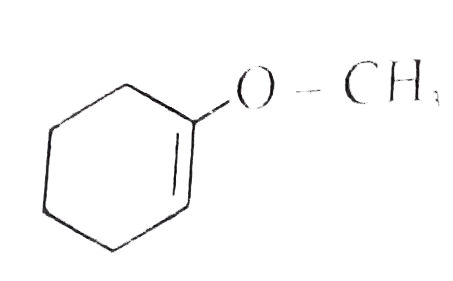Assertion (A): Electrophilic addition addition of Br2 to alkyne proceeds faster tha hta of alkene.
Reason (R): Bromonium ion intermediate of alkene is stable that that of alkyne.
If both A and R are true and R is the correct explanation of A.
If both A and R are true and R is not the correct explanatio of A.
If A is true but R is false
If A is false and R is true.
The correct Answer is:D
Topper's Solved these Questions
- ALKENESBOOK - NARAYNACHAPTER - ALKENESEXERCISE - Integer
3 Videos
- ALKENESBOOK - NARAYNACHAPTER - ALKENESEXERCISE - Subjective Type Question
3 Videos
- ALKENESBOOK - NARAYNACHAPTER - ALKENESEXERCISE - Matrix Match Type
3 Videos
- ALKANESBOOK - NARAYNACHAPTER - ALKANESEXERCISE - Integer Answer Type
7 Videos
- ALKYNESBOOK - NARAYNACHAPTER - ALKYNESEXERCISE - Level-6
112 Videos
Similar Questions
Identify the incorrect statement / statement :
(i) Alkynes are more reactive than alkenes towards electrophilic addiction reaction
(ii) Alkynes are less reactive than alkenes towards electrophilic addiction reaction
(iii) Alkynes decolourise Br2 water
(iv) Addition of HBr to alkenes in presence of peroxide proceeds via Markownikoff's rule
View SolutionAlkenes undergo electrophilic addition reactions. Electrophilic addition to unsymmetrical alkenes involve the formation of a more stable carbocation intermediate in the first step which is rate determining and carbocation is then attacked by a nuclephile to form product
Which one of the following alkene reacts most readily with HCI?
View Solution
Knowledge Check
Assertion: Addition of Br2 to trans but-2-ene yields meso- 2,3-dibromobutane.
Reason : Bromine addition to an alkene is an electrophilic addition reaction.AAssertion and reason both are correct statements and reason is correct explanation for assertion.BAssertion and reason both are correct statements but reason is not correct explanation for assertionCAssertion is correct statement but reason is wrong statement.DAssertion is wrong statement but reason is correct statement.Assertion : CH3−C≡C−CH3 is more reactive for electrophilic addition reaction than CH3CH=CH−CH3
Reason : Carbocation intermediat formed in alkene is more stable than the alkyne.AIf both assertion and reason are true and the reason is the correct explanation of the assertion.BIf both assertion and reason are true but reason is not the correct explanation of the assertion.CIf assertion is true but reason is false.DIf assertion is false but reason is true.The carbon-carbon double bond the carbon-carbon double bond in a molecule is capable of decolorizing Br2/CCl4 following free radical mechanism. The decolorization of Br2/water solution however shows electrophilic addition. The addition of bromine to cyclopentene provides evidence for bromonium ion immediate in bromine addition. it follows ionic mechanism. when cyclopentene reacts with bromine in presence of CCl4 anti addition occurs and gives trans-isomer so addition of halogen to an alkene is a stereospecific reaction. Cis-alkene on addition with halogen gives meso products and trans alkene on addition gives racemic mixture.
Q Trans-2-butene on reacting with Br2 in CCl4 forms mainlyA±2,3-dibromobutaneB+2,3-dibromobutaneC−2,3-dibromobutaneDMeso-2,3-dibromobutane
A : Alkynes is more reactive than alkene towards electrophilic addition reaction.
R : Alkynes form stable carbocation than alkene.
View SolutionIdentify the incorrect statement / statement :
(i) Alkynes are more reactive than alkenes towards electrophilic addiction reaction
(ii) Alkynes are less reactive than alkenes towards electrophilic addiction reaction
(iii) Alkynes decolourise Br2 water
(iv) Addition of HBr to alkenes in presence of peroxide proceeds via Markownikoff's rule
View SolutionAssertion. Alkynes are more reactive towards nucleophilic addition reaction as compared to alkenes
Reason. Alkynes contain two pi bonds, while alkenes have only one pi bond
View SolutionAlkenes undergo electrophilic addition reactions. Electrophilic addition to unsymmetrical alkenes involve the formation of a more stable carbocation intermediate in the first step which is rate determining and carbocation is then attacked by a nuclephile to form product
Which one of the following alkene reacts most readily with HCI?
View SolutionAlkenes undergo electrophilic addition reactions. Electrophilic addition to unsymmetrical alkenes involve the formation of a more stable carbocation intermediate in the first step which is rate determining and carbocation is then attacked by a nuclephile to form product
 +H2OH2SO4−−−→ Product
+H2OH2SO4−−−→ Product
View Solution
